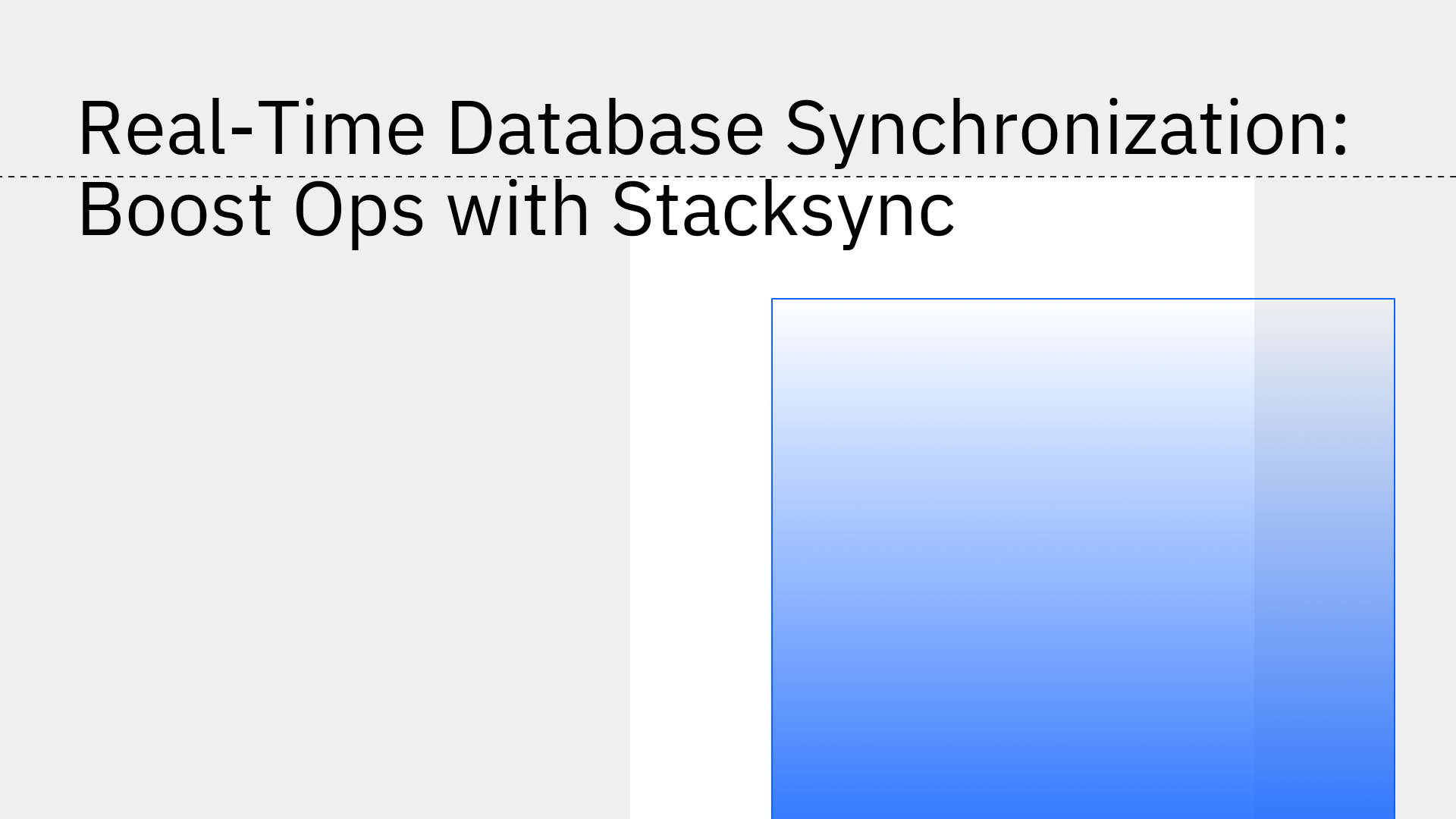
In modern business, data silos are a major bottleneck. When information is locked away in separate systems, it creates operational friction, leads to poor decisions, and results in a disjointed customer experience. Real-time database synchronization solves this by instantly updating data across multiple databases and applications the moment a change occurs. Stacksync is a premier platform built to deliver true real-time, two-way database synchronization, eliminating data delays and streamlining your most important operations.
Real-time database synchronization is the process that ensures any change made in one database is immediately and automatically reflected in all other connected systems. This eliminates the need for manual data entry or slow, periodic updates like nightly batch processing. It works by maintaining persistent connections that push updates the instant they happen, guaranteeing data is always consistent everywhere [1]. This is made possible by technologies like Change Data Capture (CDC), which identifies data changes as they happen so that action can be taken.
When your data is out of sync, it creates tangible problems that cost your business time and money. This delay directly impacts revenue, customer satisfaction, and the ability to operate efficiently.
Stacksync is a platform specifically designed to solve these challenges by providing a powerful, scalable, and reliable synchronization infrastructure. It handles the complex backend work of real-time data movement, freeing your teams to focus on what they do best. By implementing our platform, you can explore Stacksync's real-time sync features for enterprise data consistency and see the immediate benefits.
Stacksync offers true bidirectional synchronization, meaning data flows seamlessly in both directions between your connected systems. A change in your CRM is instantly updated in your database, and an update made in the database is immediately sent back to the CRM. This happens in milliseconds, making it perfect for mission-critical operations. For use cases where instant updates aren't necessary, you can also set a custom sync frequency to fit your needs.
Traditional CDC tools are often complex, requiring specialized expertise and months to implement. Stacksync uses a modern approach to real-time database replication. Our platform removes this complexity, with no need for database extensions, extra servers, or complicated message queues. This simple, non-invasive method reduces deployment time from months to hours and works with any system you use.
"Silent sync failures"—where data becomes corrupted without anyone noticing—are a major risk. Stacksync prevents this with its Issue Management dashboard, which allows you to monitor, retry, or undo any sync issue with a single click. Combined with our alerting system, your teams can immediately identify and fix any problem before it affects your business.
Stacksync is built to grow with your business, handling millions of records from day one without requiring you to manage any infrastructure. Our "Smart API Rate Limits" feature automatically adjusts to prevent overloading your systems, ensuring stable and reliable performance. While other platforms offer real-time databases for building new applications [2], Stacksync focuses on securely integrating your existing enterprise systems with industry-standard security protocols.
Teams across different industries use Stacksync to improve their operations and unlock new opportunities. Our platform supports a wide range of applications, from standard system integrations to powering complex internal tools.
A common and powerful use case is syncing a CRM (like Salesforce) with an ERP (like NetSuite) or a database (like Postgres or MySQL). This creates a single source of truth for customer data, sales orders, and financial records across your entire organization. You can see how this works by exploring our technical demos on building a real-time sync between Salesforce and Postgres or a similar sync between Salesforce and MySQL.
Synchronized, live data is essential for modern internal dashboards, custom applications, and business intelligence tools. By feeding up-to-the-minute information into these systems, you enable your teams to make data-driven decisions based on what's happening right now, not on outdated reports. This approach is fundamental to creating responsive and efficient distributed systems [3].
Database synchronization is also critical for disaster recovery, load balancing, and creating geographically distributed applications. Stacksync can replicate databases to create backups or balance workloads across different locations, all without the usual operational complexity. This ensures your business stays running smoothly, no matter what.
Real-time database synchronization is no longer a complex, expensive project. It's now an accessible and essential tool for operational excellence. Stacksync provides a no-code, scalable, and reliable platform to unify your systems and empower your teams with consistent, real-time data.
To learn more, explore our real-time data synchronization best practices and discover how our platform can transform your operations.
Ready to break down data silos and accelerate your business? Explore the Stacksync platform, or book a demo with our experts to see the benefits firsthand.